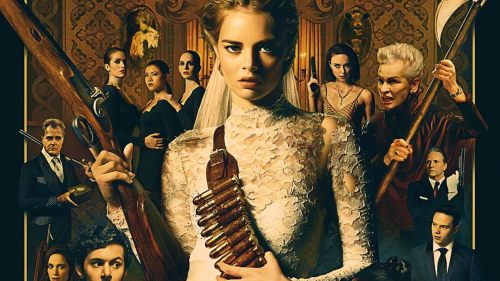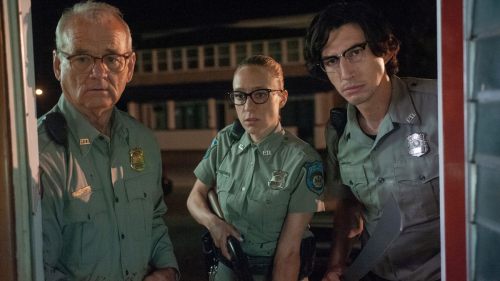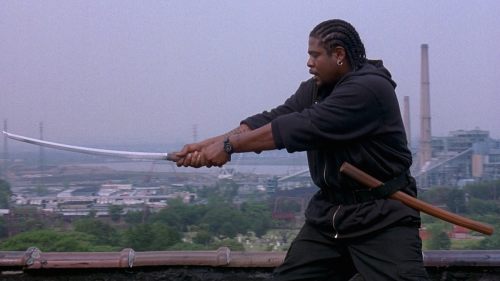Cannes 2019 Review: THE DEAD DON’T DIE Is The Most Nonchalant Zombie Invasion In Film History
The sleepy little hamlet of Centerville is nowhere, and as such, everywhere. Aside from a trio of visitors mentioning that they’re in from Cleveland, Jim Jarmusch allows zero identifying marks for the setting of his new zombie flick The Dead Don’t Die, leaving it in the conceptual no-man’s-land that is “The Suburbs.” It’s a cultural mindset more than a place, a cozy insularity in which everyone knows everyone else; the film opens on area cops Ronnie (Adam Driver) and Cliff (Bill Murray) giving the local forest hobo (Tom Waits) a pass after he fires a gun at them, because Cliff went to high school with the feral woodsman and knows his heart’s in the right place.
Cliff and Ronnie, along with their partner Mindy (Chloë Sevigny, doing her best with a rather thankless role of constant hysterical panic), act as guides ferrying the audience from one part of Centerville to the next. Like fellow B-movie homage Mars Attacks!, Jarmusch cleverly structures the film as a patchwork narrative joined by common circumstance, an invasion of the walking dead in this instance. Jarmusch assembles a colorful coterie of oddballs — standouts among them being a katana-wielding Tilda Swinton as a Scottish undertaker, the RZA as a deliveryman for Wu-PS, Steve Buscemi as a foul-tempered Trumpist — and uses each discrete plot strand as a vessel for his pet themes and devices.
So while this may be a savvy, naturally observed small-town movie, it also happens to be the broadest and most simplistic Jarmusch movie in his filmography. He’s playing all the hits, some of which have started to get a bit pitchy upon their umpteenth rendition. His obsession with analog technology as an emblem of a purer, more decent time curdles into a fogeyish scold against smartphone addiction, as the literal braindead saunter around moaning “wiiii-fiiii.” The expected allusions to esoterica have gotten cuter and more in-our-face, whether it’s Driver commenting on a Star Wars keychain or multiple characters making explicit reference to Sturgill Simpson and the theme tune he composed for this film. George Romero gets a name-drop, for anyone not clued into all the Night of the Living Dead bits. After Buscemi’s character beats back an attacker hungry for his flesh, he remarks that “that was weird,” a sentiment that usually goes without saying in Jarmusch’s pictures.
Though the filmmaker suffuses his writing with despair — “They’re not zombies, they’re just dead people!” Mindy cries in the face of certain doom — his comic tendencies remain mercifully un-stifled. The upside of being Jarmusch’s slightest and most accessible film is also being one of his funniest. The contrast between his nonchalant house style and the urgent stakes of the scenario leads to some solid laughs; picture Driver, crammed into a tiny red SmartCar, evading the horde of brain-eaters. One conversation pole-vaulting over the fourth wall to repeatedly own Jarmusch by name belongs in any serious analysis of his oeuvre, while getting the most forthcoming humor out of the subdued deliveries the director demands of his actors. After an hour or so, the mere sight of Swinton is enough to coax a chuckle.
Hard to wrap one’s head around a project with such a star-studded cast (Selena Gomez is in here somewhere, albeit briefly) and the end of the world being minor Jarmusch, but here we are. His 2014 film Only Lovers Left Alive found a similar world-weariness in a different species of the undead, alienating two vampires from humanity instead of two humans from the monsters surrounding them. That fuck-it-all energy persists, just expressed now through more basic terms. With ambitions as humble and modest as the denizens of Centerville, he imagines a homespun apocalypse halfway between The Walking Dead’s blunt miserablism and the aloofness that is his trademark. If only he didn’t meet his lessers in the middle.



